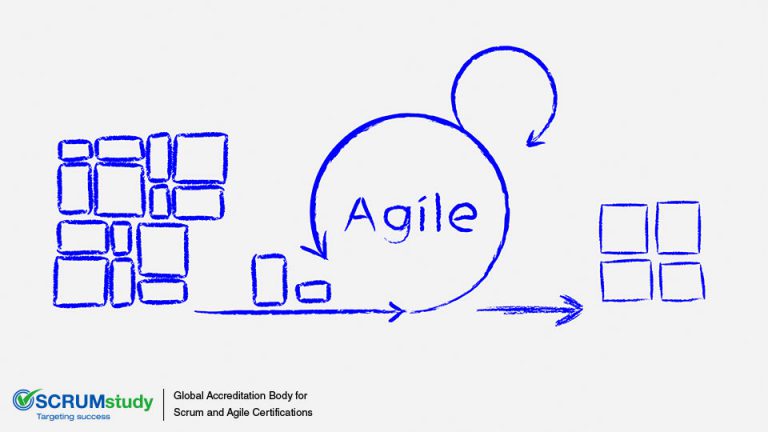Scrum Master certification training manual
Posted by SCRUMstudy® on June 13, 2024
Categories: Agile Agile Frameworks Project Delivery Scrum Training
The Scrum Master certification training manual from SCRUMstudy provides a comprehensive guide to understanding and implementing Scrum practices effectively. It covers essential topics such as the roles and responsibilities of a Scrum Master, the Agile principles underpinning Scrum, and detailed explanations of Scrum ceremonies, artifacts, and best practices. The manual emphasizes practical application through case studies and real-world examples, equipping trainees with the skills to facilitate team collaboration, manage sprint planning, and ensure continuous improvement. By adhering to the SCRUMstudy framework, the training manual prepares individuals to achieve certification and excel in their roles as Scrum Masters, fostering successful Agile transformations within their organizations.
Agile methodology is a dynamic project management approach to software development and implementation. Within a few years of its inception, Agile methodology has become popular because it is both developer and customer friendly. This is because—unlike the traditional Waterfall approach—Agile methodology is an adaptive approach that permits changes and modifications to be incorporated into the overall project plan at multiple points.
The hallmark of Agile methodology is the incremental and iterative approach to software development. In other words, the entire project is broken down into various customer-valued features that are developed in small repetitive cycles so that these features are delivery ready at the end of each iteration. The frequent delivery of business-valued features is customer as well as developer friendly. This is because, first, the technical team and stakeholders work collaboratively; second, this saves time and money; third, constant feedback from stakeholders enables developers to continuously evolve the software; and last, this promotes lightweight framework with more emphasis on working software than on documentation.
One of the key practices is daily meetings in which the team members inform the entire team on the progress of the project and discuss issues faced and obstacles. This helps the team foresee potential risks and work toward resolving them. Thus, close communication among the team members, increased productivity, evolutionary approach and reduced risks are the four pillars of the Agile methodology. Agile can be best described in the following four basic principles enshrined in the Agile Manifesto:
- Individuals and interactions over processes and tools
- Working software over comprehensive documentation
- Customer collaboration over contract negotiation
- Responding to change over following a plan


